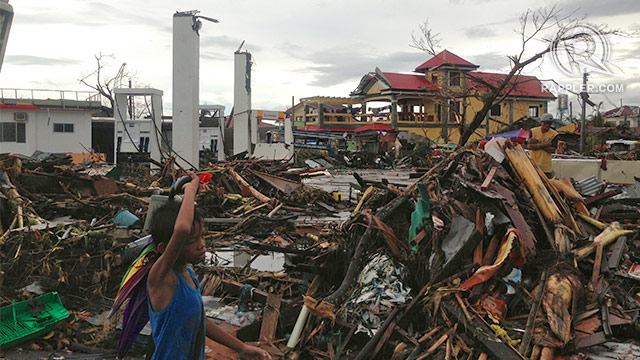SUMMARY
This is AI generated summarization, which may have errors. For context, always refer to the full article.

MANILA, Philippines – Fourteen international military, 59 foreign medical teams, and 96 humanitarian partners rushed to help the Philippines after Typhoon Yolanda (Haiyan) struck the central regions of the country.
The world has “shown immense generosity,” United Nations (UN) Undersecretary-General for Humanitarian Affairs and Emergency Relief Coordinator Valerie Amos said on Friday, November 22.
But according to a humanitarian assistance expert, this poses a challenge to the government.
“There’s a coordination risk in that. You don’t want to have 50 different players each going their own separate direction in a uncoordinated fashion,” Jeremy Konyndyk, Director of USAID’s Office of US Foreign Disaster Assistance (OFDA), told Rappler.
“It’s important that the government provide the leadership, provide the strategy that others could follow,” Konyndyk stressed.
The USAID director, however, pointed out that under tough circumstances in affected areas, the government can only do so much.
“When you have a storm surge of the kind we saw here – we got 10-meter wall of water moving at lightning speed into inland territory – there’s just very little that you can do in the face of something like that. That’s hard to prepare for,” he said.
Under fire during the early response phase of the crisis, the Aquino government and local government units are now pressured to get their act together in steering the affected-areas to recovery.
In the early days of the crisis, it was difficult to speed up response because communication and power lines were down, the airport and seaports were heavily destroyed, and the roads were blocked. The national government was overwhelmed and the local government units in affected areas were paralyzed.
Stabilizing the situation
UN agencies in the country admitted it was indeed difficult to carry out response without local partners, but the situation in Leyte has considerably improved, they said.
“Fortunately, the central government was there as well to compensate for the absence. And now we are coming to a point where possible (normalcy) is coming into place again, and we do have counterparts and we can work together,” Luiza Carvalho, UN resident and humanitarian coordinator in the country, said in a press conference on Friday.
Carvalho emphasized the importance of coordination and cooperation between the national government and the LGUs as scaled-up relief and rehabilitation efforts kick in.
“Each of them has to play their role. We are here to support them to play their roles as best as possible. So we can deliver what is expected,” Carvalho said.
Humanitarian groups helped the government in stabilizing the situation in hard-hit Leyte by extending logistical and financial support.
The USAID team was one of the first humanitarian groups to arrive in the province. Within 48 hours, the team, other humanitarian groups and the government were already planning how to respond.
The US deployed more than 50 helicopters, airplanes, and ships, including the George Washington battle group, to transport and distribute relief goods and to help conduct search and rescue operations.
“That was critical, I think, to getting early momentum because the logistical challenges in those early days were so difficult,” Konyndyk recalled.

Tremendous amount of aid
The recovery phase will take a while but humanitarian groups said they are in for the long haul.
“It will take very long to get to a certain normalcy, but we will be there and we will be supporting the local and central government,” according to Carvalho.
Humanitarian organizations currently in the country are grouped into clusters to implement the UN Humanitarian Action Plan in coordination with government’s line agencies and local units.
On November 12, Carvalho announced before the country’s diplomatic corps it called for $301 million funds for the action plan. There was favorable response from the international community and this amount has been raised to $351 million, Konyndyk told Rappler.
“That is a tremendous amount of money, a tremendous success right on that appeal given that it has only been a week and a half,” Konyndyk said, noting that it is the biggest natural disaster response since the Japan earthquake.
The US government is the biggest donor to the World Food Program response. Its contribution to the humanitarian appeal has reached about $22 million to date. The amount covers requirements of various clusters including logistics and relief commodities, water sanitation and hygiene, shelter and settlements, humanitarian coordination and information management. It is also now looking into livelihoods.
The Philippine government tracks aid inflow through the initiative dubbed as FAiTh, or the Foreign Aid Transparency Hub.
Rappler also maintains a list of foreign aid based on reports from the government, different embassies, and international organizations.
With funds pouring in and a system in place, the challenge is for the government to demonstrate political will to hit the ground running and manage recovery efforts well.
“It’s time to also start thinking about how we get beyond that, how we get past the point of international provision of basic services and get back Filipino provision of basic services through the government, civil society, and the market forces,” Konyndyk said. – Rappler.com
Add a comment
How does this make you feel?
There are no comments yet. Add your comment to start the conversation.